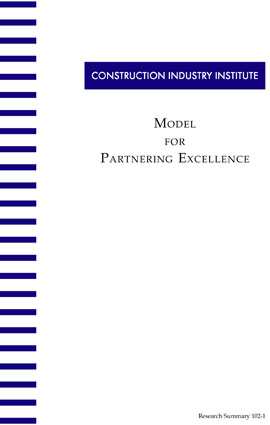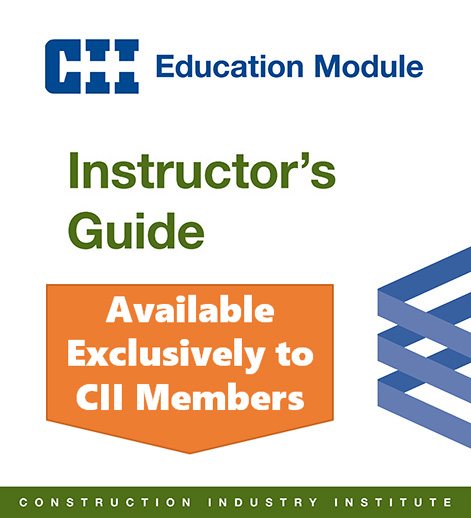
Model for Partnering Excellence
Partnering, a subject of previous CII research, is often an integral factor in the successful delivery of a construction project. Partnering’s value to the industry lies in its ability to utilize the inherent strengths of all partners for the common and individual good, to speed project completion while observing high standards of safety and integrity, and to strengthen the competitive edge of all partners by producing products that meet the customers’ need. Partnering’s bottom line: a construction industry process that strengthens both projects and partners, tightens schedules, safeguards quality, and enhances each partner’s competitive edge.
The CII Partnering II Research Team has published a book that describes a partnering implementation process model, CII Implementation Resource 102-2, Partnering ToolKit. That publication presents five implementation phases for partnering, each having objectives and key success factors. The team also identified benchmarks that verify the benefits achievable through partnering in the areas of cost, schedule, safety, and quality.
The research team concluded that partnering can offer a competitive advantage for the U.S. construction industry. The team found six key factors in implementing and managing successful partnering relationships.
- Establishing Trust
- Getting Top Management’s Support
- Establishing Win-Win Objectives
- Addressing Internal Barriers
- Getting Champion to Direct the Process
- Developing Measures, Linked to Objectives
Six key factors in implementing and managing successful partnering relationships are: (RS102-1, p. v)
- Establishing Trust
- Getting Top Management’s Support
- Establishing Win-Win Objectives
- Addressing Internal Barriers
- Getting Champion to Direct the Process
- Developing Measures, Linked to Objectives
The research showed that managing an effective partnering relationship is a five-phase process melding the executive, management, and craft levels. Refer to the RS102-1 for a description of the objectives and critical success factors associated with each phase. (RS102-1, p. 6)
Phase 1 – Owner’s Internal Alignment
Phase 2 – Partner Selection
Phase 3 – Partnering Relationship
Phase 4 – Project Alignment
Phase 5 – Work Process Alignment
To assess true benefits, measure, and track performance (with partnership) against performance before establishment of the partnering relationship with the following suggested types of measures (based on research): (RS102-1, p. 18)
- Results: hard measures based on objective analysis of performance relative to quantifiable standards
- Process: used to assess the existence and performance of work processes
- Relationship: qualitative measures used to assess health of partnership or project team, or the perception of its performance by key customers


